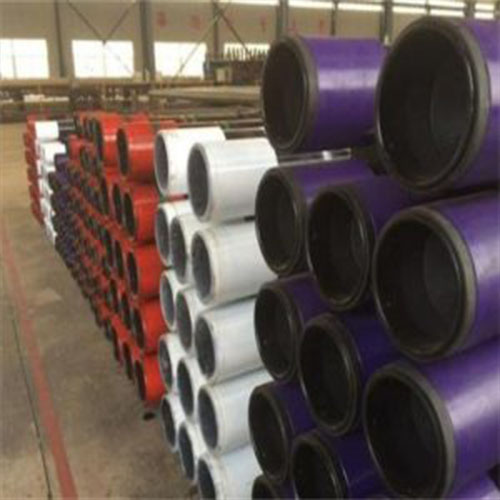Inhoudsopgave
Voordelen van verloren wasgieten voor onderdelen van roestvrijstalen kogelkraanbehuizingen
Verloren wasgieten, ook wel investeringsgieten genoemd, is een proces dat al eeuwenlang wordt gebruikt om ingewikkelde en complexe metalen onderdelen te creëren. Deze methode is bijzonder geschikt voor het produceren van onderdelen van roestvrijstalen kogelklepbehuizingen vanwege de mogelijkheid om nauwkeurige en gedetailleerde componenten te maken.
Een van de belangrijkste voordelen van verloren wasgieten voor onderdelen van roestvrijstalen kogelklepbehuizingen is de mogelijkheid om onderdelen te produceren met een hoge nauwkeurigheid en consistentie. Dit is essentieel voor onderdelen van kogelkraanbehuizingen, omdat eventuele onvolkomenheden of inconsistenties in het gietproces kunnen leiden tot problemen met de functionaliteit en prestaties van de klep.
Naast de precisie maakt verloren wasgieten het ook mogelijk onderdelen te maken met een gladde oppervlakteafwerking. Dit is belangrijk voor roestvrijstalen kogelkraanhuisonderdelen, omdat een ruw of oneffen oppervlak kan leiden tot lekkages of andere problemen met de klep. De gladde oppervlakteafwerking die wordt bereikt door verloren wasgieten zorgt ervoor dat de klep soepel en efficiënt werkt.
Een ander voordeel van verloren wasgieten voor onderdelen van roestvrijstalen kogelkraanbehuizingen is de mogelijkheid om onderdelen met complexe geometrieën te produceren. Onderdelen van kogelkraanbehuizingen hebben vaak ingewikkelde vormen en kenmerken die moeilijk te bereiken zijn met andere gietmethoden. Door middel van verloren wasgieten kunnen onderdelen met ingewikkelde details en nauwkeurige afmetingen worden gemaakt, zodat de klep naar behoren functioneert.
Precisiebewerkingstechnieken voor onderdelen van roestvrijstalen kogelkraanbehuizingen
Als het gaat om de productie van roestvrijstalen kogelkraanbehuizingsonderdelen, wordt vaak een combinatie van verloren wasgieten en precisiebewerking gebruikt om de beste resultaten te bereiken. Verloren wasgieten wordt gebruikt om de oorspronkelijke vorm van het onderdeel te creëren, terwijl precisiebewerking wordt gebruikt om het onderdeel te verfijnen om aan de uiteindelijke specificaties te voldoen. Deze combinatie van technieken maakt de productie mogelijk van hoogwaardige, duurzame onderdelen die essentieel zijn voor de betrouwbare werking van kogelkranen in verschillende toepassingen.
Concluderend: verloren wasgieten en precisiebewerking zijn twee essentiële technieken die worden gebruikt bij de productie van roestvrij staal onderdelen van stalen kogelkraanbehuizing. Deze technieken maken de productie mogelijk van hoogwaardige, duurzame componenten die voldoen aan nauwe toleranties en specificaties. Door deze technieken te combineren kunnen fabrikanten roestvrijstalen kogelkraanbehuizingsonderdelen maken die betrouwbaar, efficiënt en duurzaam zijn.
Lost Wax casting and precision Machining are two common techniques used in the manufacturing of Stainless Steel ball valve casing parts. These techniques are essential in creating high-quality, durable components that are crucial for the proper functioning of ball Valves in various industries.
Lost wax casting, also known as investment casting, is a process that has been used for centuries to create intricate and complex metal parts. This technique involves creating a wax model of the desired part, coating it with a ceramic shell, and then melting the wax out of the shell to leave a hollow cavity. Molten metal is then poured into the cavity, filling the space left by the wax model. Once the metal has solidified, the ceramic shell is broken away to reveal the finished part.
Lost wax casting is ideal for producing parts with intricate details and complex shapes that would be difficult or impossible to achieve through other manufacturing methods. This technique allows for a high degree of precision and accuracy, resulting in parts that meet tight tolerances and specifications. Stainless steel ball valve casing parts produced through lost wax casting are known for their excellent surface finish and dimensional accuracy.
Precision machining is another essential technique used in the manufacturing of stainless steel ball valve casing parts. This process involves removing material from a workpiece using cutting tools to achieve the desired shape, size, and surface finish. Precision machining can be performed using various methods, including turning, milling, drilling, and grinding, depending on the specific requirements of the part.
Precision machining is crucial for creating stainless steel ball valve casing parts that meet the exact specifications and tolerances required for proper functioning. This technique allows for tight control over dimensions, surface finish, and geometric features, ensuring that the final parts are of the highest quality. Precision machining also allows for the production of large quantities of parts with consistent quality and performance.

When it comes to manufacturing stainless steel ball valve casing parts, a combination of lost wax casting and precision machining is often used to achieve the best results. Lost wax casting is used to create the initial shape of the part, while precision machining is used to refine the part to meet the final specifications. This combination of techniques allows for the production of high-quality, durable parts that are essential for the reliable operation of ball valves in various applications.
In conclusion, lost wax casting and precision machining are two essential techniques used in the manufacturing of stainless steel ball valve casing parts. These techniques allow for the production of high-quality, durable components that meet tight tolerances and specifications. By combining these techniques, manufacturers can create stainless steel ball valve casing parts that are reliable, efficient, and long-lasting.

